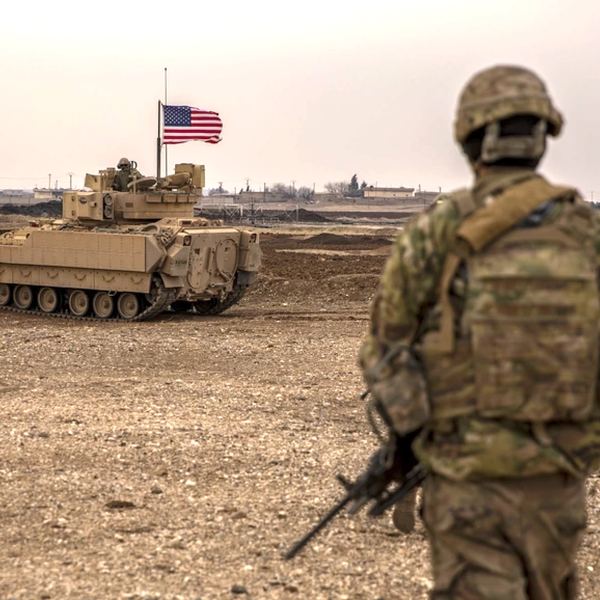On Jan. 20, 2024, Iran’s Revolutionary Guards successfully launched a three-stage rocket that put the Sorayya satellite into orbit, at an unprecedented 460 miles above the Earth’s surface.
It is alleged that Iran’s space program is a cover for testing a nuclear weapons delivery system. What is a scientific victory for Iran could also be a strategic projection of the Islamic Republic’s geo-spatial power.
While this space launch was planned days in advance, it occurred on the same day that Israeli forces allegedly killed five Revolutionary Guards of the expeditionary Quds Force in Damascus, followed by an Iraqi militia affiliated with Iran firing ballistic missiles at a base housing American forces in Iraq.
Just five days earlier, Iran launched salvos of ballistic missiles towards Syria, Iraq, and Pakistan against alleged terrorist bases.
The recent satellite launch into space is connected to these political tensions on the ground. It sent a message to the U.S. and Israel that, despite sanctions or the assassination of its scientists, Iran can still develop the technology to fire a long-distance missile, whether into space or over a continent. If the sanctions and assassinations were meant to curtail such activities, Iran demonstrated they are not working.
This points to an unexamined aspect of the conflict in the Middle East since Oct. 7, 2023: Outer space has become a conflict zone. When Iraqi Shi’a militias or Yemeni Houthis launch a drone or ballistic missile, these weapons either enter space or depend on satellites.
What the latest Iranian launch has also demonstrated is that the conflicts of Earth — the current fighting in the Middle East in this case — have been projected into space, reminiscent of a trend that began with the Cold War superpowers.
Militarizing space
A ballistic missile burns up the fuel that propels it into the atmosphere until it enters space. Once the fuel is consumed, the missile’s trajectory cannot be altered, following a path determined by gravity pulling it back toward the Earth’s surface — and its eventual target. The German V-2 was the first ballistic missile. Fired on September 8, 1944, it was the first human-made object hurtled into space. As they invaded Germany, both the U.S. and Soviets sought out the German rocket scientists to develop their respective missile/space programs. The V-2’s technology allowed the U.S. and Soviets to send satellites into space, even allowing astronauts to reach the moon itself.
In October 1957, the Soviets launched the first satellite, Sputnik, into space, where it orbited the earth and delivered a prestigious victory for communism during the Cold War. According to historian Douglas Brinkley, “For a world locked in a Cold War rivalry between the Americans and the Soviets, space quickly became the new arena of battle.” Space launchers and launches were a means of refining military technology discreetly, in the name of space exploration, while simultaneously broadcasting these advances to adversaries and allies.
From an American national security perspective, if the USSR could launch a satellite into space, it could do the same with a nuclear warhead, putting American territory in danger. Furthermore, a missile/ rocket might carry a physical payload, such as a satellite or a warhead, but it also carries a political message intended to communicate to adversaries short of violence. That dynamic is what made the Cold War cold.
The same threat perceptions explain why the U.S. feared Iran’s satellite program well before the regional war escalated last October, pitting American forces against the Islamic Republic’s allies in Yemen and Iraq.
The American and Soviet space programs were also about prestige, and the most recent launch has been a matter of national prestige for Iran in the aftermath of the deadly terrorist blasts that occurred in the nation on Jan. 3.
Middle East geopolitics and astropolitics
As for the Middle East, historically, outer space was an area used to penetrate the region. During the Cold War, the U.S. and USSR deployed spy satellites above the Middle East, and later satellites were essential for the global positioning system (GPS) to guide American cruise missiles and drones used against Iraq during the 1991 Gulf War, and then against al-Qaida after 2001.
In the 21st century, the Global South entered the space arena, led by China, India, and Iran. Space soon emerged as an arena for competition among Middle Eastern states. Among the Persian Gulf regimes, Qatar achieved asymmetric power in the 1990s against Saudi Arabia by broadcasting Al Jazeera to its much larger neighbor, as well as the entire region, via a news channel that depends on satellite technology. The United Arab Emirates is currently bolstering its credentials as a regional Sparta by embarking on a mission to Mars.
Israel, however, had a monopoly on space technology and putting its own satellites into space. Iran’s current space program serves as a means to challenge a regional rival as well as a superpower — the U.S.
At the same time, Iran’s allies in the “Axis of Resistance” have militarized space. Iran gave Houthis drone technology that can fly long distances to strike Saudi Arabia and the UAE. Houthi drone attacks are guided by satellite technology, as a drone flying at such a long range depends on a satellite data link for information to be sent back to the pilot in Yemen.
As for Houthi drones, they are GPS-guided to their target before crashing into it to wreak havoc and damage. The Houthis have no known communications satellites and rely on commercially available satellite space. These attacks demonstrate a sophisticated level of coordination among the Houthis, who use 3D printing to build the drones and the components based on Iranian designs, while imagery analysts, uplink engineers, mechanics, and pilot crews work in unison to support the attacks. By 2022, Houthi strikes were one of the factors that pushed Saudi Arabia and the UAE to extricate themselves from the Yemen conflict, which also gave an advantage to Iran, the Gulf countries’ regional adversary.
The Houthis mastered both drone technology and ballistic missiles. The Soviets transformed the German V-2 into the Scud, the most widely proliferated ballistic missile in the Arab world. The Houthis inherited Scuds from the former government after the Arab Spring. In 2017, they fired them towards Saudi Arabia. In 2023, the Houthis launched both drones and ballistic missiles towards Israel’s southern port of Eilat, in solidarity with Hamas.
In 2017, the Houthis attacked King Salman air base in Saudi Arabia and as well as Riyadh with the Burkan 2-H, a ballistic Scud-type missile inherited from the old Yemeni arsenal, and engineered with a range of more than 500 miles to hit the Saudi capital. Unlike the Burkan, the missiles that were launched towards Eilat were most likely based on the Iranian Ghadr (or Qadr) a close relative of the North Korean Nodong, basically a larger missile based on the original Soviet Scud missile, with more than double the range at 1,200 miles. These Houthi ballistic missiles reached outer space, where Israel’s Arrow defense system intercepted them in the stratosphere, marking the first instance of space combat in history.
The Islamic Republic’s most recent space launch has sent a message to Israel that Iran is catching up. The message to the U.S. is that Iran is in a stronger position after Trump’s 2017 unilateral withdrawal from the nuclear deal. Afterwards, Iran had the excuse to advance its centrifuge nuclear technology, its nuclear stockpile, and now advance its space program.
Meanwhile, the message to the Iranian people is that, while its economy is under sanctions and they endure terrorist attacks, at least they can take national pride in reaching space.
















